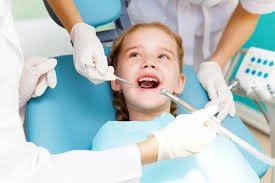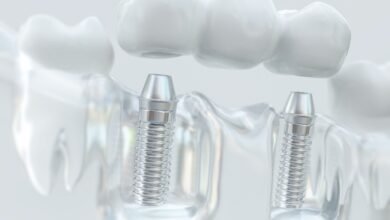Radiant Renewal: A Practical Guide to Modern Skin Rejuvenation

Introduction
Skin rejuvenation refers to the range of treatments and lifestyle approaches designed to restore a healthier, more youthful skin appearance by addressing texture, tone, pigmentation, and elasticity. Approaches vary from topical medical-strength prescriptions to minimally invasive procedures and advanced energy-based technologies. This article explains what skin rejuvenation involves, the most commonly used methods, how to choose a suitable treatment based on goals and skin type, essential aftercare, and the safety considerations to weigh before starting. The tone emphasizes evidence-based thinking and encourages consulting qualified clinicians (dermatologists, plastic surgeons, licensed aestheticians) for personalized plans. Where appropriate, the guidance favors treatments backed by clinical studies or long-standing clinical practice and highlights when to seek professional evaluation. This introduction sets the stage for practical, clear sections that each focus on a single theme so you can quickly navigate the topic and use the information responsibly.
What is skin rejuvenation and how does it work?
Skin rejuvenation is an umbrella term for treatments and practices that improve skin health and appearance by stimulating cellular repair, collagen production, or surface renewal. Treatments work by targeting one or more layers of the skin: topical agents primarily affect the epidermis, chemical peels and microdermabrasion remove or remodel the superficial layer, microneedling induces controlled micro-injury to stimulate collagen remodeling in the dermis, and energy-based devices (lasers, IPL, radiofrequency) target specific chromophores or heat the dermal layer to promote collagen contraction and neogenesis. The biological goal is to reduce inflammation, encourage controlled healing, and rebuild a more organized extracellular matrix so the skin looks firmer, smoother, and more even-toned. Importantly, realistic outcomes depend on baseline skin health, age, genetics, and the specific mechanism of the treatment chosen. Because different processes address different problems pigmentation, fine lines, laxity, or acne scars effective rejuvenation is often multi-modal and staged over time for cumulative benefit.
Common methods and technologies used today
A broad spectrum of methods is used in clinical practice, ranging from daily topical regimens to office procedures. Topical retinoids, antioxidants (like vitamin C), and sunscreen form the foundation for ongoing prevention and gradual improvement. Superficial therapies include chemical peels and microdermabrasion, which renew the epidermis and help with texture and mild pigmentation. Minimally invasive procedures such as microneedling and platelet-rich plasma (PRP) stimulate dermal remodeling without major downtime. Energy-based options fractional lasers, intense pulsed light (IPL), radiofrequency (RF), and ultrasound can treat pigmentation, vascular issues, and deeper collagen loss with varying recovery timelines. Injectable therapies (botulinum toxin for dynamic lines, hyaluronic fillers for volume loss) complement rejuvenation by addressing muscle movement and structural deficits. Each modality has its niche, risk profile, and downtime; combining compatible treatments in a staged plan often yields the most natural, durable results. Selection should always consider skin type, pigmentation risk, and clinical evidence for the condition being treated.
How to choose the right treatment for your skin
Selecting an appropriate skin rejuvenation plan begins with a clear assessment of goals (e.g., reduce fine lines, lighten pigmentation, improve texture), skin type (including Fitzpatrick phototype), medical history, and tolerance for downtime. Start with conservative, evidence-backed measures daily sunscreen, topical retinoid if tolerated, and professional-grade antioxidant serums. For procedural options, consult a board-certified dermatologist or plastic surgeon who can recommend treatments based on clinical evaluation and photographic documentation. Consider the recovery window you can manage: superficial peels and microneedling have short downtime, while ablative lasers may require longer healing but deliver dramatic results. Factor in cumulative approaches combining a course of microneedling with topical growth factors, or following IPL with pigment-targeting topicals. Also weigh cost, expected longevity of results, and maintenance needs. A reputable clinician will present realistic outcomes, discuss alternative options, and explain potential side effects so you can make an informed, individualized decision.
Aftercare, recovery, and maximizing results
After any rejuvenation treatment, focused aftercare is essential to protect healing skin and to consolidate improvements. Core principles include sun protection (broad-spectrum SPF 30+ or higher and physical barriers), gentle cleansing, and avoiding irritants like harsh exfoliants or unprescribed acids until the skin barrier fully recovers. For procedures causing micro-injury microneedling, fractional lasers, medium-depth peels follow provider instructions for wound care, use barrier-repair moisturizers, and avoid heavy makeup until re-epithelialization. Topical prescription agents such as topical antibiotics or steroid creams may be used briefly when clinically indicated; otherwise, prioritize non-comedogenic, fragrance-free products. Nutrition, hydration, and sleep support skin recovery biologically, and smoking cessation significantly improves outcomes. Adherence to a staged maintenance plan periodic touch-ups, sunscreen use, and professional follow-ups helps results last longer. If unexpected redness, persistent pain, pus, or pigment changes occur, seek prompt professional assessment to reduce the risk of complications.
Risks, safety considerations, and when to consult a professional
While many rejuvenation treatments are safe when performed by qualified clinicians, risks include redness, prolonged swelling, infection, scarring, and post-inflammatory hyperpigmentation particularly in darker skin tones or with aggressive procedures. Device settings, practitioner expertise, and pre-/post-treatment protocols strongly influence safety and outcomes. Be cautious with non-medical settings offering high-energy procedures without proper medical oversight. Disclose medications (like isotretinoin) and medical history that can affect healing. Avoid procedures during active skin infection, uncontrolled systemic illness, or pregnancy when contraindicated. Seek a certified dermatologist or licensed medical practitioner who can perform a proper skin assessment, propose evidence-based options, and manage complications. For complex concerns severe acne scarring, suspected skin cancers, unusual pigment disorders consultation with a specialist is essential before pursuing cosmetic rejuvenation.
Conclusion
Skin rejuvenation is a versatile field combining preventive daily care, topical therapies, minimally invasive procedures, and advanced energy-based technologies. Effective, lasting improvement is achieved through tailored plans that balance benefits, downtime, and safety while prioritizing sun protection and evidence-based choices. Working with qualified professionals, setting realistic expectations, and committing to appropriate aftercare and maintenance are the best ways to achieve healthy, refreshed skin that looks natural and durable over time.
Frequently Asked Questions (FAQs)
Q1: How long until I see results?
A: Timelines vary topicals may show change in weeks to months; microneedling and lasers often show progressive improvement over 3–6 months as collagen remodels.
Q2: Is skin rejuvenation safe for darker skin tones?
A: Yes, but darker skin has higher pigment-risk. Choose clinicians experienced with darker phototypes and gentler modalities or pigment-safe settings.
Q3: Can I combine treatments?
A: Yes combination therapy is common (for example, IPL for pigment + microneedling for texture), but sequencing and spacing should be planned by a professional.
Q4: Will results last forever?
A: No aging is continuous. Results can be long-lasting with maintenance and sun protection, but touch-ups or repeat treatments are often needed.
Q5: Where should I seek treatment?
A: Seek board-certified dermatologists or plastic surgeons and clinics with clear safety protocols, sterile technique, and documented before/after results.


